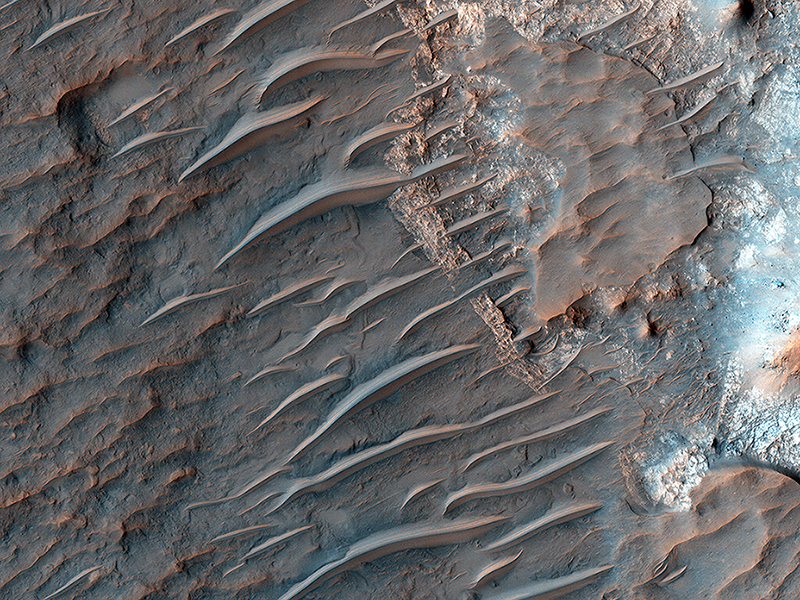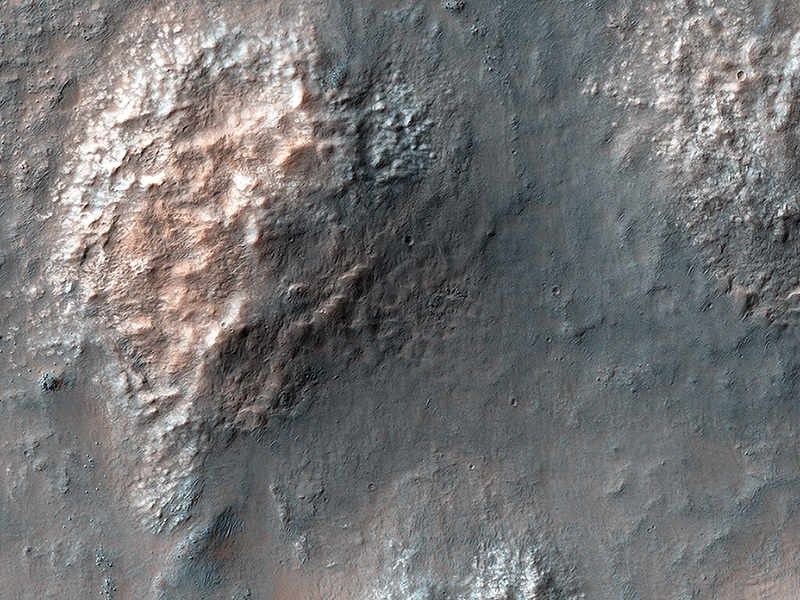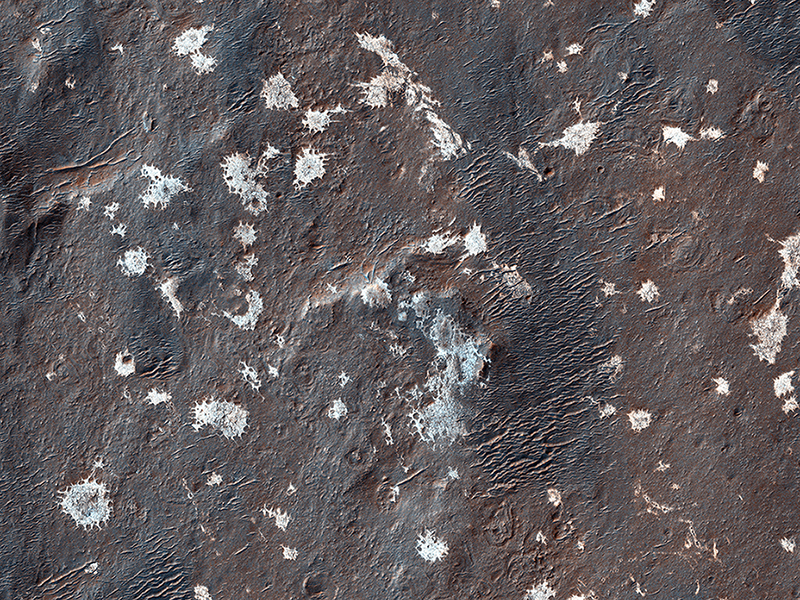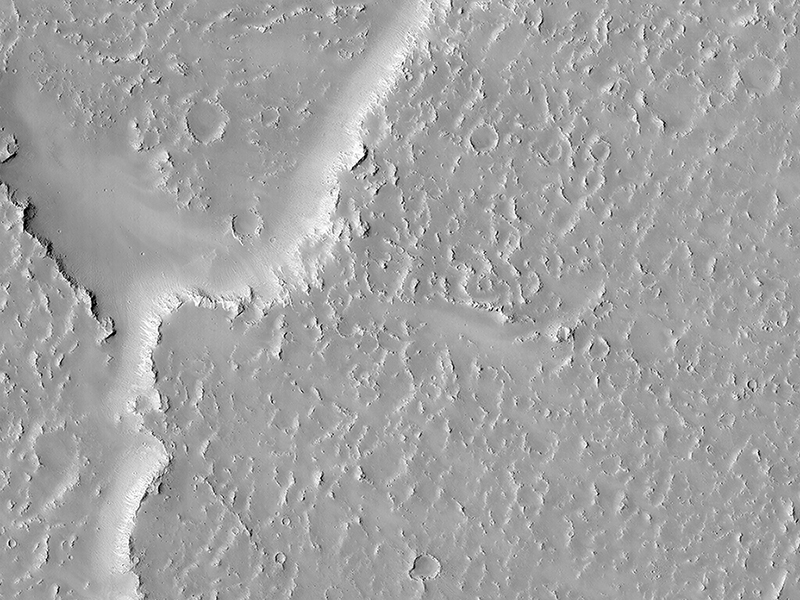Paul Geissler wrote:Banded TARs in Iapygia (ESP_020782_1610) (HiClip)
The tropics of Mars are commonly littered with small bright ripples that were somehow shaped by the wind. Called "transverse aeolian ridges", or TARs, the features stand up to 6 meters tall and are spaced a few tens of meters apart. They are typically oriented transverse to modern day wind directions, and often found in channels and crater interiors. The physical process that produces these features is still mysterious. Most TARs display no evidence of internal structure, so it is difficult to discern exactly how they were formed.
While validating a HiRISE digital terrain model of the area, Sarah Mattson of the University of Arizona discovered these rare banded TARs in Iapygia, south of Syrtis Major. These features resemble TARs elsewhere on Mars, except that they show bands or layers on their northwest faces but fewer or none on the southeast sides.
One possible interpretation of this strange layering is that these particular TARs are made up of wedge-shaped layers, as shown in the schematic cross-section illustrating the inferred structure of the TARs. If this hypothesis is correct, it implies that the ripples grew vertically over time, as material accreted at the crests of the ridges. It also suggests that the banded slopes faced upwind.
This observation might provide a valuable clue to the formation of TARs elsewhere on Mars, if they have a similar internal structure but that structure cannot be seen because they are made up of homogeneous materials that are uniform in color.
This is a stereo pair with ESP_021639_1610.
Alfred McEwen wrote:Chaos in Eridania Basin (ESP_037142_1430) (HiClip)
Eridania is the name of topographically enclosed basin located in the Southern highlands of Mars that has been suggested to be the site of a large ancient lake or inland sea.
A chaotic jumble of relatively bright blocks sits on the lowest floor regions of the basin, sampled in this image. These blocks contain a variety of hydrated minerals that could have formed in the water, perhaps preserving information about an ancient habitable environment.
This lake or sea partially drained to form the Ma'adim Vallis, a large channel that itself drained into Gusev Crater to the north. The Spirit rover landed in Gusev Crater in 2004 to study the expected lake deposits, but found that the floor of the crater had been covered by lava that was younger than the fluvial activity.
Eridania is a better place to find lake sediments, but is too rough and dangerous for the landing systems sent to Mars in the past.
Sharon Wilson wrote:Mysterious Light-Toned Deposit in Vinogradov Crater (ESP_037163_1590) (HiClip)
Vinogradov is an old, 224-kilometer diameter, heavily degraded impact crater in southern Margaritifer Terra.
The southeastern floor of Vinogradov is covered with several mysterious light-toned, sub-meter scale “blobs” that lack obvious layering. In some places the light-toned material appears to have filled pre-existing craters giving them a circular appearance.
The light-toned material has a northwest-southeast orientation and tends to be associated with a smooth, darker-toned deposit. This material may be related to ejecta from a nearby crater, eroded from the rim of Vinogradov or emplaced by some other process.
This is a stereo pair with ESP_037519_1590.
Dan Berman wrote:Overlapping Lobate Lava Flows in Daedalia Planum (ESP_037641_1560) (HiClip)
Lava flows south of Arsia Mons in Daedalia Planum transition from younger flows with elongated, sinuous morphologies to the northeast, to older, broader lobes and sheet flows to the southwest. (The time scale we’re talking about is approximately 100 million to 1 billion years.) At the southern margin of the Tharsis region, older, probably 3-billion year old volcanic plains have been identified where Tharsis flows contact the ancient highlands.
The high-resolution of HiRISE images allows for reconstruction of complex volcanic surfaces, including delineation of individual flow lobes and superposition relationships within a flow field. This image shows a contact between two of the younger, elongate flows to the northeast. Populations of small, superposed impact craters can be used to derive relative and absolute age constraints for individual flows and flow sequences.
Credit: NASA/JPL/University of Arizona
<< Previous HiRISE Update



